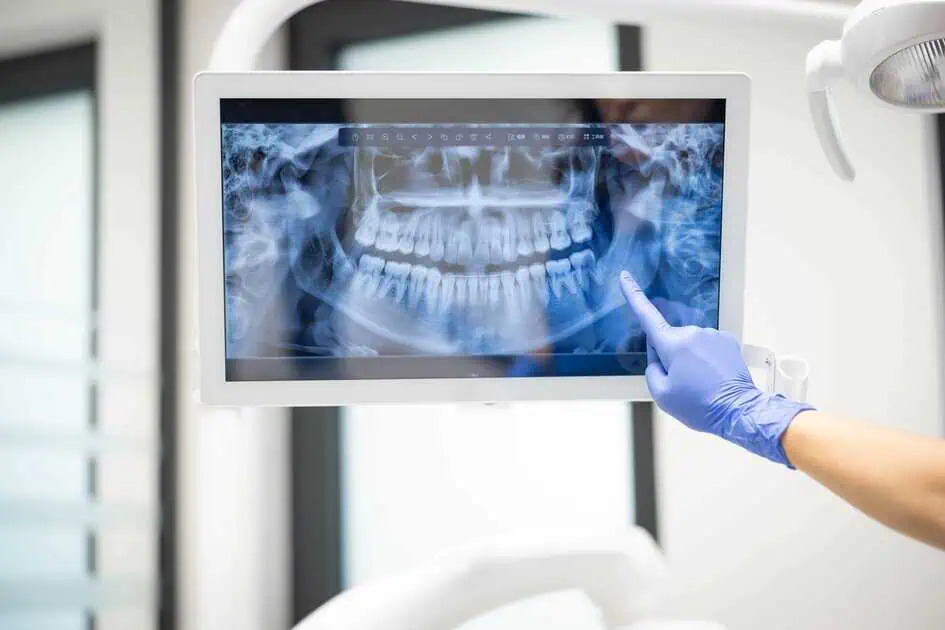Table of Contents
Root Canals are important dental procedures that protect a tooth from further damage and preserve your ability to chew and smile confidently. More serious dental issues are avoided with root canal treatment, which removes the infected pulp and seals the tooth against future bacterial intrusion. At California Coast Dental Arts, we understand that dental decisions can feel daunting, especially when unsure if you truly need a root canal or if your tooth is just acting up. This blog post will explore key indicators of possible tooth infections and the importance of seeking timely care.
Below, we will discuss what a root canal is, signs that suggest you might benefit from this procedure, the steps involved in the treatment process, how it can help with tooth pain relief, and how you can maintain your oral health afterward. If you find that any of these warning signs apply to you, don’t hesitate to reach out and learn more about Root Canals Treatment in Oceanside, CA.
Understanding the Basics of Root Canal Therapy
What Is a Root Canal?
Dental root canal treatment involves removing diseased tissue from inside the tooth. Each tooth contains a central area known as the pulp chamber, which holds nerves, blood vessels, and connective tissues. If bacteria invade this space, it can lead to infection, causing pain, swelling, and other complications. Root Canals Treatment helps remove the infected pulp, disinfect the inside of the tooth, and seal it to prevent the bacteria from returning.
Often, the idea of a root canal may bring to mind unpleasant thoughts, but modern techniques have made it easier for patients to receive pain-free root canal therapy. When performed by experienced professionals, such as at California Coast Dental Arts, the procedure can feel similar to having a regular filling. The goal is to relieve tooth pain with root canal procedures to support a calmer patient experience.
Why Would Someone Need a Root Canal?
A few circumstances can make a root canal necessary. The most common cause is deep tooth decay that extends into the pulp chamber. If a cavity becomes too extensive and reaches the pulp, bacteria can spread throughout the root canal system, resulting in a painful infection. Another cause can be trauma to the tooth, such as a crack or chip. Repeated dental procedures on the same tooth may also damage the pulp, making the tooth more susceptible to infection. Failing to address these problems early on may result in abscesses or even tooth loss.
What Are the Goals of Root Canals Treatment?
The goal of a root canal is to remove pain and infection while preserving the natural tooth. Preserving your tooth is often the best option, as it helps maintain your natural bite and jaw structure. Extraction, on the other hand, can result in gaps that need implants or bridges. With Gentle root canal services, you can keep the original tooth in place, promote oral health, and avoid complications connected to tooth loss.
Root Canal Signs and Symptoms You Shouldn’t Overlook
Severe Tooth Pain or Throbbing
Intense tooth pain is one of the most obvious root canal signs and symptoms. This might manifest as a throbbing ache or a sharp sensation when biting down. Some notice sensitivity that lingers for several minutes after consuming hot or cold foods. These discomforts often indicate that the pulp tissue is irritated or infected. Pain might come and go, but if it persists, it’s a clear indication to seek a professional evaluation. Tooth pain relief with root canal procedures can bring significant comfort and help you get back to enjoying your meals and daily routines.
Swelling and Tenderness in the Gums
If a tooth infection spreads beyond the pulp chamber, it can cause swelling or tenderness in the gums near the affected tooth. Sometimes, this swelling can be localized, creating a small bump or pimple-like spot on the gums, known as a sinus tract. This is a potential tooth infection warning that requires professional care. While over-the-counter pain relief methods might temporarily alleviate discomfort, they don’t address the root cause of the infection. A timely root canal can help remove the bacteria, protect the surrounding bone, and keep the tooth stable.
Darkening or Discoloration of the Tooth
An infected pulp can lead to internal changes in the tooth’s structure, causing darkening or discoloration. While discoloration can happen for many reasons, including certain medications or external stains, a sudden color change could hint at underlying pulp issues. Professional assessment from a root canal specialist in Oceanside, CA, is essential to pinpoint the cause. Root canal therapy can remove diseased tissue from damaged tooth pulp, restoring the tooth. Your dentist might recommend a crown or restoration to enhance appearance and stability.
Sensitivity that Lasts Longer Than Usual
Tooth sensitivity is a common experience for many individuals. However, if you notice that your sensitivity to hot or cold foods continues for an extended period, it might be a signal of inflammation or infection of the nerves inside the tooth. Infected nerves within the pulp chamber are unlikely to recover on their own. Left untreated, the infection can move through the root tip and cause more complicated problems. Root Canals Treatment can address the issue at its source, reducing the risk of worsening discomfort.
Recurring or Persistent Dental Abscess
As a result of a bacterial infection, an abscess develops as a pocket of pus in response to a bacterial infection. It usually appears as a small bump on the gums accompanied by pain, swelling, and bad breath. An untreated abscess is a significant tooth infection warning sign. Infections can spread beyond the tooth, potentially impacting overall health if not promptly managed. A root canal is typically the most direct way to clear the infection within the tooth and prevent further issues.
The Root Canals Treatment Process at California Coast Dental Arts
Initial Examination and Diagnosis
Performing a comprehensive evaluation before proceeding with any treatment is essential. Our staff at California Coast Dental Arts will examine your oral health history, perform a comprehensive examination, and take X-rays to provide a clear picture of the state of your tooth. This helps determine if Root Canals Treatment is the best option for you. If the dentist concludes that a root canal is necessary, they will walk you through each step so you know precisely what to expect.
Numbing and Patient Comfort
One of the main concerns many people have is whether the procedure will hurt. Modern techniques allow pain-free root canal therapy by administering a local anesthetic to numb the affected tooth and surrounding tissues. During the procedure, you should feel little more than pressure. If you have anxiety about dental visits, our staff can discuss options to help you remain relaxed throughout the appointment.
Removing the Infected Tissue
Once you’re comfortable, the dentist creates an opening in the top of the tooth. In this opening, infected or damaged pulp is cleared out, and the root canal system is cleaned. Specialized tools are used to remove all traces of bacteria and infected tissue. The canals are then shaped in preparation for a filling material. This step is essential for removing the infection’s source and stopping any bacteria that may still be present from growing.
Sealing and Restoring the Tooth
Canals are cleaned and shaped, then filled with a rubber-like substance called gutta-percha. This material seals the canals and helps protect the tooth from further contamination. In many cases, crowns or fillings are placed on top of teeth to restore structure and maintain function. Crowns are especially common for teeth that experience heavy biting forces, such as molars. By covering the treated tooth, a well-made crown extends its lifespan and allows you to chew comfortably.
Follow-Up and Recovery
Root Canals Treatment often provides immediate relief from the pain caused by infection. However, it’s normal to experience minor sensitivity or tenderness in the days following the procedure. Over-the-counter pain medications or dentist-prescribed options can help reduce discomfort. Within a day or two, most patients can resume normal activities. Follow-up visits may be recommended to confirm the tooth is healing well. Keeping oral hygiene habits like brushing, flossing, and using an antibacterial mouth rinse can keep the treated tooth in good shape for years.
Key Benefits of Choosing Root Canals Treatment in Oceanside, CA
Preserving Your Natural Smile
Root canal therapy preserves your natural tooth, one of its biggest advantages. Losing a tooth can affect your self-confidence, ability to chew certain foods, and even the alignment of neighboring teeth. By saving the existing tooth, gentle root canal services help maintain proper jaw function, ensuring your smile remains intact.
Enhanced Comfort and Pain Relief
Pain can interfere with daily tasks like talking, eating, or sleeping when an infection invades the pulp. Tooth pain relief with root canal procedures can be almost immediate once the source of infection is removed. Modern tools and techniques also mean that a root canal can often be as comfortable as receiving a standard filling.
Cost-Effectiveness Over the Long Term
Although it might appear less expensive to have a tooth extracted than to go through a root canal, extraction often leads to other dental costs. You might need dental implants or bridges to close the gap and prevent neighboring teeth from shifting. These restorative solutions can be more expensive and may require additional procedures. By choosing root canal therapy, you’re investing in your long-term oral health and reducing the need for more complex treatments later.
Protecting Neighboring Teeth
Infections in one tooth can spread to the surrounding area. By promptly addressing the infected pulp with Root Canals Treatment, you can help shield adjacent teeth from potential decay. A treated and sealed tooth blocks bacteria from moving deeper into the jawbone or nearby teeth, supporting a more stable dental environment.
Maintaining Your Oral Health After a Root Canal
Practice Regular Oral Hygiene
It is important to keep your mouth clean to avoid future infections. Brush your teeth at least twice a day using a fluoride toothpaste. Floss daily to remove plaque and food particles from between your teeth. An antibacterial mouth rinse can add an extra defense against harmful bacteria. Even after you’ve received pain-free root canal therapy, the surrounding gum tissue and neighboring teeth still require diligent care.
Schedule Routine Check-Ups
Visiting your dentist regularly allows for prompt detection of potential issues. Professional exams and cleanings at California Coast Dental Arts can help spot early signs of decay or cracks in treated teeth. This routine care can ensure that your root canal remains stable and complications-free for many years.
Be Mindful of What You Eat
While a root canal can save a severely infected tooth, minimizing stresses on that tooth is still important, especially shortly after the procedure. Chewing hard items like ice, hard candy, or pens may lead to cracks. Maintain a balanced diet that includes fruits, vegetables, dairy products, and lean proteins. Healthy foods offer vitamins and minerals that support gum health and tooth strength.
Use a Mouthguard if You Grind Your Teeth
Clenching or grinding your teeth at night, also known as bruxism, can weaken the tooth structure. This applies to both natural and treated teeth. A custom-fitted mouthguard can help redistribute the pressure and protect your teeth from excessive wear. Regularly wearing one can safeguard your investment in Gentle root canal services and maintain a stable bite.
Report Any Unusual Symptoms Promptly
After a root canal, it is important to monitor changes in your tooth’s sensation. Though the procedure is designed to eradicate infection, there’s always a slight possibility that bacteria could return or that the filling material might need repair over time. Contact your dentist immediately if you notice swelling, pain, or an odd feeling when biting down.
Conclusion
Root canal therapy is a valuable option for addressing deep tooth decay, severe pain, and infection. Recognizing early root canal signs and symptoms—such as persistent pain, swelling in the gums, or significant sensitivity—can help you take action before the condition worsens. By choosing an experienced practice like California Coast Dental Arts, you can benefit from Gentle root canal services that prioritize your comfort and long-term dental health.
If you’ve been experiencing any of the issues mentioned in this post, it may be time for an evaluation to see if Root canal treatment could help. Remember, saving your natural tooth is almost always preferable to extraction, as it supports a healthy bite and maintains your natural smile. Taking a proactive step can help avoid complications and improve oral health overall.
No more toothaches – Schedule your root canal today! This choice could be the key to preserving your tooth, relieving pain, and ensuring you enjoy a healthy, functional smile. Our team at California Coast Dental Arts is here to provide comprehensive support and guidance every step of the way. By investing in Root Canals Treatment in Oceanside, CA, you are investing in your lasting oral well-being and comfort. Contact us to learn more or to set up an appointment.
We look forward to helping you achieve a longer-lasting, healthier smile.






